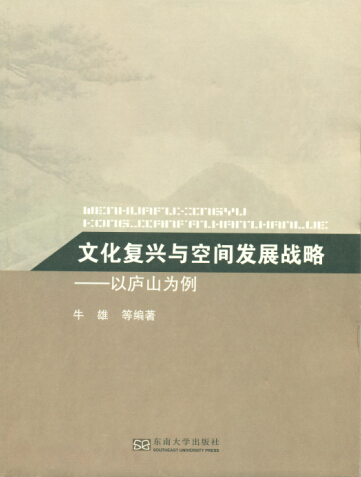Cultural Renaissance and Spatial Development Strategy:Take Mount Lu as an Example
2016-05-16
By Niu Xiong, Research Institute of Resources and Environment Policies, DRC
2014-12-17

From the perspective of national development trends and regional development momentum, it is considered that a country needs a renaissance in culture and thoughts in order to regain confidence in the nation’s ideology and culture and implant traditions into the modern times. Therefore, taking Mount Lu in Jiangxi province with rich traditional culture features as the example, this book strives to give a scientific and appropriate understanding of the cultural significance of Mount Lu, fully analyzes the history, status quo, development basis and environment of Mount Lu, and brings up the strategic positioning, guidelines, basic principles, general approach, development goals and strategies for the development of Mount Lu. The book also straightens up the cultural venation and types of Mount Lu and comes up with a basic approach for the development of Mount Lu including a tentative cultural presentation plan, an ecological cultural industry system, a general spatial layout, an urban development layout and the institutional and mechanism innovation, and offers typical regional development cases for reference.
This book has two parts. The first part is focused on the position of Mount Lu and it gives an illustration of the research background and significance of the research project, the basic environment and conditions, strategic position, and approaches and goals for development of Mount Lu. The second part is about development plans, mainly introducing the spatial layout, plan for resource integration, cultural background, the culture-led comprehensive industrial system, guarantee measures and implementation mechanisms.
The book is written by Niu Xiong, Research Fellow of the Research Institute of Resources and Environment Policies of DRC. The author made a number of field surveys and profound studies and analysis prior to the writing of the book. Based on his research findings, he also made several modifications and revisions in the first edition. Due to limited time and knowledge, there may be unavoidably mistakes and errors in the book. The author looks forward to receiving comments from dear readers.














